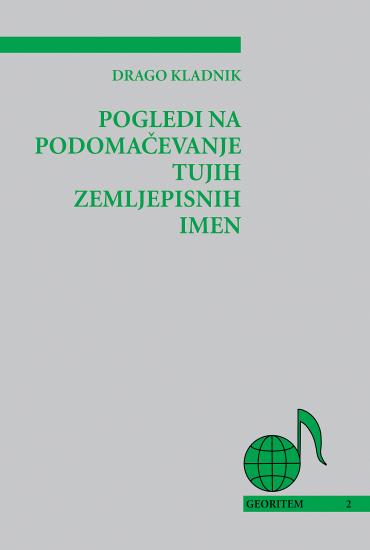
Author:
Drago Kladnik
Year:
2007
A geographical name or toponym is a proper name that by definition firmly and unquestionably identifies and individualizes a specific geographical phenomenon or topographical object. All geographical names in the world and in every language are divided into endonyms and exonyms.
An “endonym” is the name of a geographical feature in one of the languages occurring in the area where the feature is situated. An “exonym” is a name used in a specific language for a geographical feature situated outside the area where that language has official status and differs in form from the name used in the official language or languages of the area where the geographical feature is situated.
The use of geographical names can be politically sensitive, and for this reason this issue has long been the subject of international discussion. To strengthen the role of international professional associations in this field, in 1959 the United Nations established the United Nations Group of Experts on Geographical Names (UNGEGN), which directs international activities in the field of geographical names.
UNGEGN has long endeavoured to reduce the use of exonyms. Through resolutions it recommends that individual countries compose lists of exonyms that should be gradually withdrawn from use and that they not add any new ones. With these efforts, UNGEGN has encroached on the autonomy of national language policies.
European languages with numerous exonyms that developed as the fruit of long-term economic, cultural, and other contacts between nations were particularly affected. Therefore, in the 1990's initiatives appeared for systematizing the use of exonyms. For this purpose, the Working Group on Exonyms was established in 2002 in the framework of UNGEGN.
For easier communication, the experts of UNGEGN are striving for the standardization of geographical names throughout the world. Every place or other topographical object should have only one official name that in transliterated form would appear in the Latin alphabet on all maps. The current state of the world when globalization is reducing distances incredibly speaks in favour of the predominant use of endonyms.
For work in the field of national standardization, national standardization bodies are essential. In Slovenia, the Commission for the Standardization of Geographical Names of the Government of the Republic of Slovenia has functioned intermittently since 1986, and when Slovenia joined the United Nations in 1992 it obliged itself to respect the resolutions on geographical names.
-
Author
-
Publishing House:
Založba ZRC
-
Publisher
-
ISBN
978-961-254-009-8
-
Year
2007
-
Series
Georitem 2
Language(s)
-
Specifications
paperback 14 × 20,5 cm 124 pages
-
E-publications
05. 12. 2019
-
Permalink